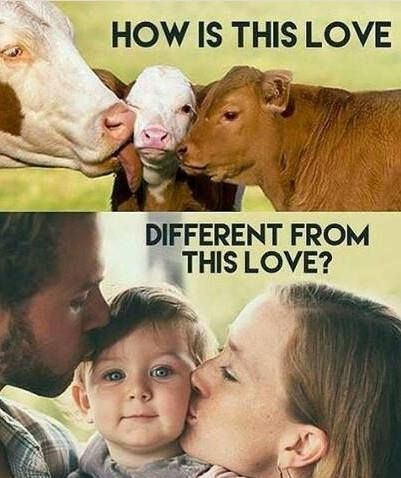In the world of animals, they are often seen as instinct- driven and interior
However, they complex behaviors, intelligence, and emotions that challenge this view.
Animals understand love too, showing deep empathy and connections.
Love is a strong feeling that connects people and animals alike.
It’s not just a human thing – animals also feel love.
Let’s explore how they defy stereotypes and reveal their emotional depth.”

∆ WHY KILLING ANIMALS IS WRONG :
Treating animals equally and avoiding their unjust killing is rooted in recognizing the shared capacity for love and connection.
Just like us, animals experience emotions, form bonds, and exhibit a range of behaviors indicating their capacity for joy, fear, and affection.
Acknowledging these similarities fosters empathy, urging us to extend compassion towards them.
Killing animals without necessity denies them the right to live and experience their own emotional connections, infringing upon the moral principle of fairness and respect for life.
By treating animals with equality and kindness, we not only honor their inherent value but also contribute to a more compassionate and harmonious coexistence.
In essence, understanding and respecting the emotional capacity of animals, as highlighted by their ability to experience love and form connections, serve as compelling reasons to treat them equally.
Recognizing their emotions fosters empathy, creating a moral imperative to avoid unjustly taking their lives.
∆ UNLEASHING EMOTIONS – BRIDGING HEARTS WITH ANIMALS:

Ever wondered if animals feel the same way we do?
Well, get ready for a journey into the world of emotions! From the joy that makes us smile to the sorrow that brings tears, we’ll discover how our feelings are not just ours alone – animals share in the emotional adventure too.
In the intricate fabric of life, emotions weave a common thread between humans and animals.
This exploration delves into the shared experiences of joy, grief, empathy, fear, curiosity, anger, and affection, revealing the emotional parallels that connect us with the diverse creatures inhabiting our world.
From the laughter of humans to the wagging tails of dogs, and the consoling gestures among chimpanzees, these examples underscore the depth and universality of emotions across species.
1. Joy and Happiness:
– Humans: Smile, laughter.
– Animals: Dogs wagging their tails, playful behavior.
2. Grief and Mourning:
– Humans: Tears, solemn demeanor.
– Animals: Elephants mourning their dead, showing signs of distress.
3. Empathy and Consolation:
– Humans: Comforting gestures, consoling words.
– Animals: Chimpanzees consoling distressed peers, demonstrating empathy.
4. Fear and Anxiety:
– Humans: Increased heart rate, avoidance.
– Animals: Shaking or trembling, seeking shelter when scared.
5. Curiosity and Exploration:
– Humans: Asking questions, exploring new places.
– Animals: Investigating surroundings, learning about their environment.
6. Anger and Aggression:
– Humans: Raised voice, aggressive posture.
– Animals: Warning growls, defensive or aggressive behavior.
7. Affection and Bonding:
– Humans: Hugging, physical touch.
– Animals: Social grooming, nuzzling, forming strong bonds with others.
8.Shared Experiences in Childbirth: (Commonalities Between Human and Animal Females)-
Both human and animal females undergo labor pains, uterine contractions, and hormonal changes during childbirth, experiencing a shared physical and emotional process of bringing new life into the world.
These parallels highlight the shared emotional experiences between humans and animals, emphasizing the complex and nuanced nature of emotions across species.
∆ THE ETHICAL DILEMMA: CHOOSING COMPASSION OVER CONVENIENCE

1) Animal Survival Instinct vs. Human Choices
In the wild, animals can’t earn currency to buy their food; their survival relies on hunting prey. However, as humans, we possess the ability to earn and purchase various resources, including food.
2) The Unjustified Act of Killing for a Single Meal
Despite our capability to procure food through other means, we often choose to take the lives of animals for a single meal.
This raises ethical concerns about the justification of such actions, especially when alternatives are readily available.
3) Modern Humans vs. Ancient Wisdom
Comparing ourselves to our ancestors, who transitioned from hunting to agriculture, sheds light on the choices we make today.
Ancient humans embraced plant-based diets after discovering agricultural methods, showcasing a transition towards compassion and sustainability.
4) The Paradox of Technological Advancements
In our technologically advanced era, with the ability to cultivate a variety of plants, the continued reliance on animal consumption seems contradictory.
Are we truly progressing if our choices don’t reflect a more humane and sustainable lifestyle?
5) Embracing a Compassionate Lifestyle:
Reflecting on our choices and drawing inspiration from our ancestors, it becomes evident that our modern advancements should guide us towards compassionate living.
Choosing plant-based diets over unnecessary animal harm is not just a matter of survival but a testament to our moral evolution.
∆ MINDFUL CHOICES:

A). Contrast with Spiritual Wisdom:
In the quest for ethical living, a stark contrast arises between our choices to satisfy our taste buds by killing animals and the spiritual wisdom found in dharma, urging us to control our senses for a higher purpose. Let’s explore this profound dichotomy.
1) Satisfying Our Tongues vs. Dharma’s Call for Self-Control
Choosing to kill animals merely for taste clashes with the spiritual concept of dharma, which urges us to control our senses and impulses.
2) Wisdom from Spiritual Books
Spiritual teachings often emphasize the importance of mindful living.
Many sacred texts guide us towards understanding the impact of our choices on ourselves and the world.
3) Controlling Desires for a Higher Purpose
In dharma, there’s a call to control desires, including the desire for specific tastes.
It encourages us to seek higher purposes beyond momentary sensory satisfaction.
4) Aligning Actions with Spiritual Principles
When we indulge in actions solely for taste, we may be missing the alignment with spiritual values that promote compassion, self-discipline, and conscious living.
5) The Journey Towards Harmony
By contemplating the teachings of spiritual books and incorporating dharma’s wisdom, we can embark on a journey towards a more harmonious existence
—one that respects life and promotes self-control over momentary indulgences.
B). WHY IS MURDERING SOMEONE CONSIDERED A CRIME, WHILE KILLING ANIMALS FOR DIETARY PURPOSES IS GENERALLY NOT CLASSIFIED AS SUCH?
I Often Thought About The Distinction Between These Two Acts.
In Hinduism, the concept of reincarnation is intricately tied to the belief in the eternal soul or Atman.
The cycle of birth, death, and rebirth is known as samsara.
This process is influenced by the law of karma, which asserts that the consequences of one’s actions in past lives determine their current and future circumstances.
According to Hindu ritual books and scriptures like the Vedas, Upanishads, Bhagavad Gita, and various Puranas, the soul may undergo a series of rebirths in different life forms.
This includes not only human births but also the possibility of incarnating in animals, plants, or other living beings.
The Bhagavad Gita, a key philosophical text within Hinduism, explores the nature of the self, duty (dharma), and the paths to spiritual realization.
It discusses how the soul transmigrates through various bodies until it attains liberation (moksha) by realizing its true nature and achieving union with the divine.
The idea of the soul incarnating as various animals before taking human birth is linked to the broader understanding that all living beings share a common spiritual essence.
This belief fosters a sense of interconnectedness and encourages compassion and empathy toward all forms of life.
∆ ANIMAL HARMONY: CHALLENGING PERCEPTIONS OF INFERIORITY

Some individuals may perceive animals as inferior due to a historical anthropocentric mindset that places humans at the pinnacle of existence.
This viewpoint often stems from cultural, religious, or societal beliefs that prioritize human intelligence and consciousness.
However, appreciating animals as interconnected beings aligned with the universe involves acknowledging their intricate roles in ecosystems, intuitive behaviors, and their ability to coexist harmoniously with nature
Qualities that could be considered superior in the context of a balanced and sustainable existence with examples:-
1. Elephants as Architects:
Elephants modify their habitats by uprooting trees and creating water holes, influencing the landscape’s structure.
This intentional shaping of their environment demonstrates a level of awareness and agency in their actions.
– Example:
By uprooting trees, elephants help create open grasslands, which promote biodiversity by providing habitats for different plant and animal species.
Additionally, their creation of water holes ensures water availability for numerous other species during dry seasons, thus sustaining the ecosystem.
2. Migratory Birds’ Navigation Skills:
Birds like the Arctic Tern embark on incredible migrations, covering vast distances with precision.
Their ability to navigate across continents suggests a profound connection with celestial cues and Earth’s magnetic fields, showcasing an alignment with the universe.
– Example:
Migratory birds such as the Arctic Tern contribute to seed dispersal across vast distances.
As they travel, they carry seeds from one region to another, promoting plant diversity and aiding in the reforestation and restoration of various ecosystems
3. Hens’ Natural Behaviors:
Hens exhibit behaviors such as scratching the soil and foraging, which play a role in their environment beyond their immediate needs.
– Example:
As hens scratch and forage in the soil, they naturally aerate it, which improves soil health and promotes better plant growth.
Their scratching helps break down organic matter, speeding up decomposition and nutrient cycling.
Additionally, hens contribute to pest control by eating insects and larvae, reducing the need for chemical pesticides and supporting a healthier ecosystem.
4. Sheep and Goats’ Grazing Habits:
Sheep and goats are natural grazers, feeding on various types of vegetation and playing a significant role in their ecosystems.
– Example:
As sheep and goats graze, they help manage plant growth and prevent overgrowth of invasive species, promoting biodiversity.
Their grazing also reduces the risk of wildfires by keeping vegetation levels in check. Furthermore, their droppings act as natural fertilizers, enriching the soil with essential nutrients and enhancing soil fertility.
5. Dolphins’ Complex Communication:
Dolphins exhibit complex communication through a variety of vocalizations and body language.
Their intricate social interactions and collaborative behaviors illustrate a sophisticated level of understanding and connection within their communities.
– Example:
Dolphins play a crucial role in maintaining marine ecosystem health by preying on fish and squid.
Their hunting practices help regulate fish populations, preventing overpopulation and ensuring a balanced food web in their aquatic environments.
6. Ant Colonies as Superorganisms:
Ant colonies operate as superorganisms, collectively solving problems and efficiently organizing tasks.
The distributed intelligence within the colony reflects a harmonious alignment with nature, optimizing resources and ensuring the survival of the entire community.
– Example:
Ants aerate the soil as they build their tunnels, which enhances soil fertility and promotes plant growth.
Their underground networks also allow rainwater to penetrate deeper into the ground, replenishing groundwater levels and helping maintain healthy soil structure.
So You See, Animals Are Not Just Important From A Spiritual Perspective But Also For The Balance And Essential Support They Provide In Sustaining Mother Earth.
∆ ANIMALS ARE EVEN CONSIDERED AS SPIRIT GUIDES:

In various religions and belief systems, animals are considered spirit guides for several reasons:
1. Symbolism and Attributes:
Animals often symbolize specific qualities or characteristics.
Their behaviors, traits, and habitats may be associated with certain virtues or lessons.
For example, the wisdom of an owl or the strength of a lion might be seen as qualities to emulate.
2. Connection to Nature:
Many spiritual traditions emphasize the connection between humans and nature.
Animals, being a part of the natural world, are seen as conduits for spiritual energy and guidance. Observing and understanding animal behavior can offer insights into the natural order of things.
3. Ancient Wisdom and Totemism:
In some cultures, there is a belief in totemism, where certain animals are considered sacred and believed to have a spiritual connection with specific individuals or groups.
The presence of a particular animal in one’s life may be seen as a symbol of guidance or protection.
4. Dreams and Vision Quests:
Animals may appear in dreams or vision quests, leading individuals to interpret these encounters as messages or guidance from the spiritual realm.
The symbolism of the animal in such experiences is often significant in guiding one’s path or decisions.
5. Spiritual Lessons:
Animals are viewed as teachers offering spiritual lessons.
By observing their behavior and qualities, individuals may gain insights into aspects of themselves or life situations.
This symbolism helps guide individuals on their spiritual journey.
Ultimately, the belief in animals as spirit guides reflects a recognition of the interconnectedness of all living beings and the idea that nature, including animals, can provide valuable insights and guidance on a spiritual level.
∆ Transcending Negative Energy:
SPIRITUAL INSIGHTS ON COMPASSION, KARMA, AND THE RIPPLE EFFECTS OF HUMAN ACTIONS :-
( The principle that energy is neither created nor destroyed )
Many spiritual teachings highlight the delicate balance of energy within the universe.
According to spiritual texts, the suffering of innocent animals due to human greed can set off a chain reaction of negative energy.
The principle that energy is neither created nor destroyed, a key concept in spiritual wisdom, indicates that this negative energy can persist and affect the overall atmosphere.
To adhere to spiritual teachings, fostering harmony is essential to prevent the perpetuation of negative energy and to live a more spiritually attuned life.
Moreover, to mitigate the effects of negative energy, it is important to focus on generating positive energy through good deeds and positive karma.
∆ COLLECTIVE ACTS OF KINDNESS:
(NURTURING A COMPASSIONATE ENVIRONMENT FOR DOMESTIC ANIMALS)

“Now, as wildlife retreats from our immediate surroundings, our responsibility to care for the remaining domestic animals becomes paramount.
A simple yet impactful way for each society to enhance the overall positivity in the world is by adopting a shared principle.
Imagine, each household contributing one chapati a day—collectively forming a significant source of sustenance for the domestic animals in our vicinity, including cows, birds, and cats.
This small act, when embraced by the entire community, can make a substantial difference.
Alongside a chapati , a bucket of water, or even a gesture of milk or other provisions according to individual means, can collectively create a compassionate and supportive environment for these innocent
∆ IN CONCLUSION :
Refraining from killing animals for our material desires and dietary preferences is imperative.
Recognizing that animals share the same universe, experience similar emotions as humans, and are not inherently inferior underscores the need for ethical treatment.
Rather than perpetuating harm for selfish gains,

fostering compassion and contributing to the well-being of domestic animals in our vicinity can
positively impact the overall harmony of our shared universe,
sparing innocent lives from needless suffering and fostering a more compassionate existence.








